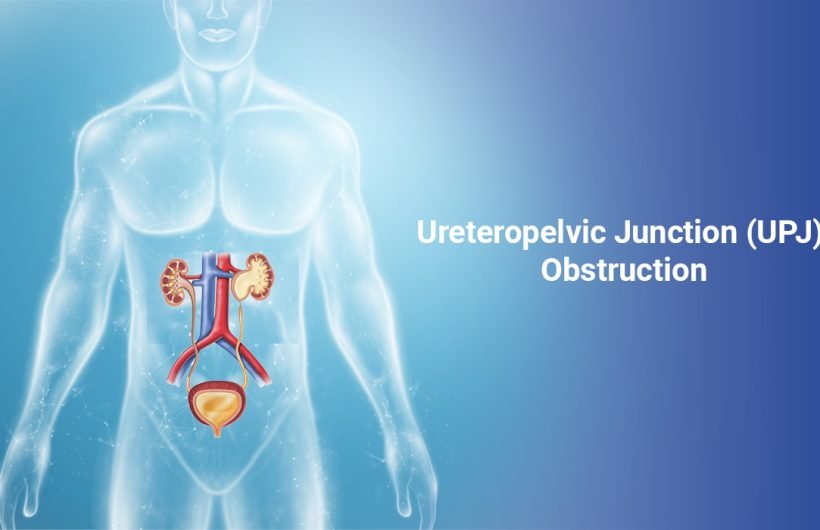Ureteropelvic junction (UPJ) obstruction is a relatively uncommon condition, affecting approximately 1 in every 500 to 1,000 individuals. However, the exact prevalence of UPJ obstruction may vary depending on various factors such as age, gender, ethnic background, and underlying medical conditions. Keep reading to learn more!
What is Ureteropelvic Junction (UPJ) Obstruction?
Ureteropelvic junction (UPJ) obstruction is a condition in which urine flow from the kidney to the bladder is blocked. Several factors, including an abnormal connection between the kidney and ureter, a kink or stricture in the ureter, or the presence of a mass such as a tumour or stone, can cause this blockage. UPJ obstruction can lead to a backup of urine in the kidney, which can cause kidney cancer, pain and swelling and potentially lead to kidney damage. Treatment for UPJ obstruction typically involves a surgical intervention to correct the blockage and restore normal urine flow.
Ureteropelvic Junction Obstruction Symptoms
The symptoms of Ureteropelvic Junction (UPJ) Obstruction can vary depending on the severity and duration of the obstruction. Some common symptoms include:
- Pain in the side or back, which may be intense and radiate to the lower abdomen or groin
- Nausea and vomiting
- A frequent urge to urinate
- Difficulty urinating or a weak urine stream
- Blood in the urine
- Abdominal swelling or bloating
- High blood pressure
- Decreased kidney function, as indicated by high levels of waste products in the blood
It’s important to note that not everyone with UPJ obstruction will experience symptoms, and the onset of symptoms may be gradual. If you suspect you may have UPJ obstruction, it is important to seek medical evaluation.
Causes of Ureteropelvic Junction (UPJ) Obstruction
Ureteropelvic junction (UPJ) obstruction can be caused by a variety of factors, including:
- Congenital abnormalities: Some people are born with an abnormal connection between the kidney and ureter, which can cause UPJ obstruction
- Scar tissue: Scarring from previous surgeries or injuries can narrow the ureter and cause UPJ obstruction
- Stones or tumors: Stones or tumors can form in the ureter or the kidney and block urine flow
- Enlarged prostate: In men, an enlarged prostate can put pressure on the ureter and cause UPJ obstruction
- Inflammation: Inflammation of the ureter or surrounding tissue can cause UPJ obstruction
- Idiopathic: In some cases, the cause of UPJ obstruction is unknown (idiopathic)
It’s important to note that UPJ obstruction can occur at any age, but it is more common in older adults. In some cases, UPJ obstruction may be associated with underlying medical conditions such as congenital abnormalities, neurogenic bladder, or spinal cord injury.
Diagnosis of Ureteropelvic Junction (UPJ) Obstruction
Diagnosis of Ureteropelvic Junction (UPJ) Obstruction typically involves a combination of medical history review, physical examination, and imaging tests. Some common diagnostic tests include:
- Urinalysis: A test that checks the urine for signs of infection, inflammation, or blood
- Blood tests: To check for signs of kidney damage, such as elevated levels of waste products in the blood
- Ultrasound: A non-invasive test that uses high-frequency sound waves to produce images of the kidneys and surrounding structures
- CT scan: A more detailed imaging test that uses X-rays and computer processing to produce cross-sectional images of the abdomen and pelvis
- MRI: A non-invasive test that uses magnetic fields and radio waves to produce detailed images of the kidneys and surrounding structures
- IVP (intravenous pyelogram): An X-ray test that involves injecting a special dye into a vein and taking X-rays to check for blockages in the urinary system
- Ureteroscopy: A procedure in which a small camera is inserted through the urethra and into the bladder to visualize the ureter and kidney directly
Once the diagnosis of UPJ obstruction is confirmed, your healthcare provider will discuss the best treatment options for your specific case.
Ureteropelvic Junction Obstruction Treatment
Treating Ureteropelvic Junction (UPJ) Obstruction typically involves a surgical intervention to correct the blockage and restore normal urine flow. Some common surgical treatments include:
- Endourologic procedures: These minimally invasive procedures use specialized instruments and cameras to remove the blockage inside the ureter
- Open surgical reconstruction: In more severe cases, an open surgical procedure may be necessary to correct the blockage and restore normal urine flow
- Pyeloplasty: This procedure involves creating a new connection between the kidney and ureter to bypass the blockage
The goal of treatment is to prevent further damage to the kidney and restore normal urine flow. The choice of treatment will depend on various factors, including the severity and duration of the obstruction, the underlying cause of the obstruction. In some cases, conservative treatment such as observation or medication may be appropriate, especially if the obstruction is mild and not causing significant symptoms. Discussing the best treatment options for your case with a urologist or nephrologist is important.
Call to Action
Ureteropelvic junction (UPJ) obstruction is typically treated with surgical intervention to correct the blockage and restore normal urine flow. Dr. Saket Narnoli has extensive knowledge and training in diagnosing and treating conditions that affect the urinary tract and male reproductive system. He is compassionate and empathetic, treating patients with dignity and respect and showing a genuine concern for their well-being. Contact him for the best treatment!






